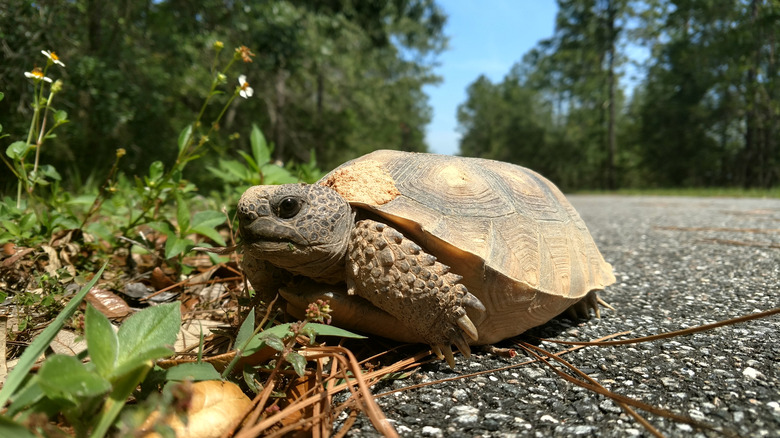The Plants & Animals Of The Coastal Plain
The plants and animals of the North American Coastal Plain are many, diverse and some are endangered from the long-leaf pine tree to the Lower Keys marsh rabbit. With more than 1,816 native plants, and multiple birds, reptiles, mammals, amphibians and fish species, the North American Coastal Plain was designated an ecological hotspot in 2016 because of its native species and the threat of destruction to its ecosystem. The region received its name for its broadness and that it slopes gently towards the Atlantic Ocean.
TL;DR (Too Long; Didn't Read)
As of 2016, the North American Coastal Plains gained a biological diversity hotspot designation. Despite previous dismissal by ecologists, it houses many endemic, or species native to the region. But many other species introduced by humans also call it home, and in some cases, threaten the entire ecosystem.
Endemic Plant Species
Endemic Plant Species
Because the region, which is more than 400,000 miles squared in area, has a relatively low level of geographic diversity, and a low elevation level, scientists did not consider it a hotbed for biodiversity. But it meets a key criterion for the biological diversity hotspot designation: more than 1,500 species of native vascular plants. Some species include the critically-endangered Florida yew, whose bark is used in some cancer medications, the Black-eyed Susan and the endangered long-leaf pine.
Endemic Animal Species
Endemic Animal Species
Of its 306 mammal species in the region, a little less than half, 114, are native to the region. Many of these native species belong to the rodent classification, including the beach vole, which ecologists consider a vulnerable species, and the Florida water rat. Other endemic mammal species include the gray fox; the Florida bonneted bat, considered vulnerable and the Lower Keys marsh rabbit, listed as critically endangered.
Other Native Species
Other Native Species
The Coastal Plains serves as home to 113 native reptile species, including the chicken turtle, the gopher tortoise and North American worm lizard. The ranks of the 57 endemic amphibians include a variety of toads, frogs and salamanders, including North America's smallest toad, the oak toad. The area serves as home to 138 endemic fish species, including the Alabama sturgeon, which is listed as critically endangered.
Invasive Species
Invasive Species
Over time, human intervention in the Coastal Plains saw new species introduced into the ecosystem. Humans introduced wild boars to North America in the 1900s for hunting, and they have since spread across the continent, including into the Coastal Plains, where they cause damage to wild bird nests. Another species that poses a threat to the south of this region is the Chinese tallow tree, which outproduces native species and harms the local ecosystem.
Exotic island apple snails graze voraciously, which harms agriculture near the wetland regions they call home. Similarly, these snails often carry diseases harmful to humans. This diverse hotspot has already lost 70 percent of its original habitat. Ecologists seek to limit the harm done to the region, in part, by managing the invasive species that exist there.
References
- National Trappers Association: Gray Fox
- Radford University: Coastal Plain Physiography
- Conservation Gateway:North American Coastal Plain: World's 36th Biodiversity Hotspot
- Coastal Review Online: Coastal Plain Is One of World's "Bio" Hotspots
- North Carolina Wildlife Resources Commission: Gray Fox
- United States Geological Survey: Invasive Species
Cite This Article
MLA
Johnson, Doug. "The Plants & Animals Of The Coastal Plain" sciencing.com, https://www.sciencing.com/plants-animals-coastal-plain-6702147/. 23 April 2018.
APA
Johnson, Doug. (2018, April 23). The Plants & Animals Of The Coastal Plain. sciencing.com. Retrieved from https://www.sciencing.com/plants-animals-coastal-plain-6702147/
Chicago
Johnson, Doug. The Plants & Animals Of The Coastal Plain last modified March 24, 2022. https://www.sciencing.com/plants-animals-coastal-plain-6702147/
